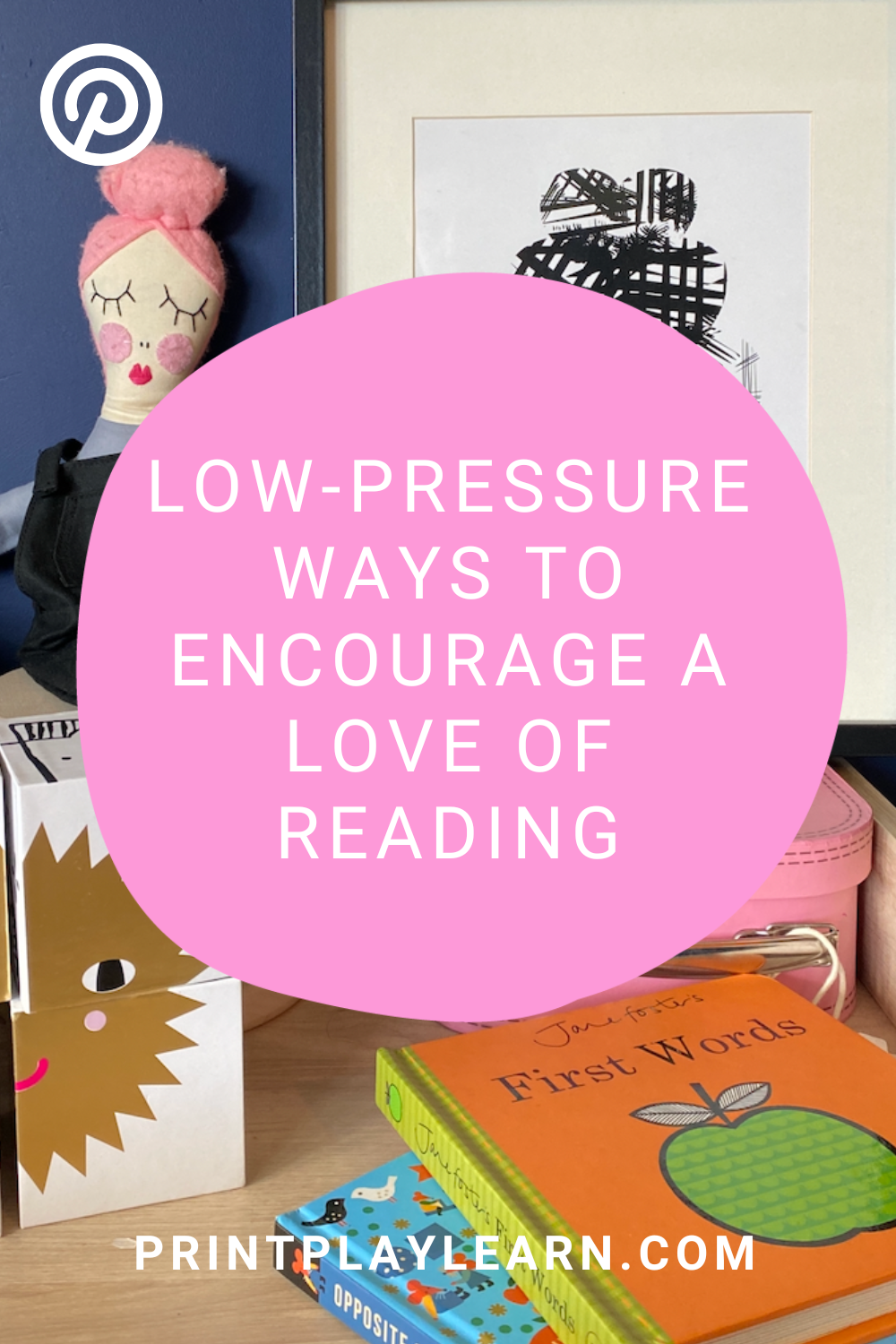Low-pressure Ways to Encourage a Love of Reading
Reading is so much more than a valuable life skill. It allows children (and grown-ups!) to imagine, create, and escape. Yes, reading can be fun! And it’s so important our kids learn this. Here are 10 ways to do that:
1. Read together, often
Normalise time spent together engaging with text. Whether looking at board books on your lap, reading bedtime stories, or flicking through magazines – there are many simple opportunities to read together long before phonics books get sent home.
2. Visit the library together
Libraries are amazing spaces, and we could all do with using them more to help them survive! If you’re lucky enough to have a local library, drop in with your child and explore books together with no other motive than to have fun and see what’s on offer. Let your children lead in what they pick; the more freedom they feel, the more exciting choosing and reading a book will be.
3. Embrace storytelling in other ways
Storytelling strengthens creativity, nurtures imagination, and helps build confidence in communication. When your child learns to value the process of storytelling, they’re more likely to grow up interested in reading new stories. There are lots of fun ways to enjoy storytelling outside of books, from using storytelling dice or stones, playing games with small-world toys, or just making up silly stories for each other.
4. Have more text around your home
If your child is reluctant to engage with books, try adding more text to your home in both playful and practical ways. Label your toy boxes, pop up a menu for the week’s meal plan, make their favourite cuddly toys a placeholder at the dinner table, or pin up playful illustrated vocab sheets.
5. Explore labels and signs together
There are plenty of ways to nurture an interest in reading outside of the home too. Just look at all the text that’s around you on your day-to-day. From road signs and shop fronts to flyers, menus and packaging. You can start introducing your child to how many words surround us by introducing your child to a sound or letter and then playing a spotting game.
6. Listen to audiobooks
Did you know both reading and listening to books activates the semantic processing of information in the same part of the brain? This means when it comes to the learning opportunities of reading, listening to audiobooks is also really valuable! A kids audiobook player like a Yoto or Toniebox is a great tool to help your child gain a sense of independence too.
7. Focus on their interests
Using your child’s interest as a starting point is another way to encourage your child’s love of reading. What books can you find that fit the right theme? Are there any magazines on the topic? Can you find Top Trumps cards or board games that focus on the things they love? What about making themed flashcards? Get creative!
8. Embrace the way tech supports reading
There’s no escaping a huge portion of the text we read is now on screen, and this isn’t likely to change for our children. Embrace the opportunities tech provides by being positive and excited about how tech supports their learning. Video games and apps are a great place for children to pick up new words and learn how to read directions, while putting on subtitles on their favourite TV shows is another top tip!
9. Role model a love of reading
Don’t forget the importance of role-modeling a love of reading yourself. Do your children see you looking at books? Are you sharing some of the interesting things you read online? When our children see us reading as something normal and fun, we can help shift any ideas that reading is boring.
10. Respect any challenges
Is your child struggling with any aspects of reading? Be patient and respect that all children learn at different speeds, even if the school curriculum suggests otherwise. You may also like to seek extra support to check whether your child has any form of neurodivergence (like Dyslexia) that will make reading more of a challenge. Either way, respect their challenges and adopt the mindset that our children always try their best.
Did you find this article useful? If so, you might also like ‘10 Playful Ways to Develop Handwriting Without Worksheets’. Plus, take a look at our memberships for playful printables to help support your child.
